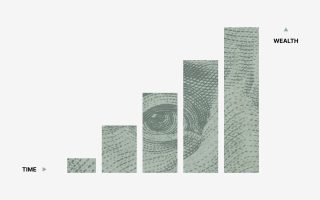Traditionally, wealth management portfolios have consisted of financial instruments such as stocks, bonds and cash. In recent years, however, the investment landscape has shifted to embrace more alternative types of investments such as art, wine, cars, watches and other collectibles.
Previously, the domain of a select few who had knowledge and access to these markets, these asset classes have since seen lower barriers to entry making them more accessible to broader audiences. According to Deloitte’s 8th Art and Finance Report, 89% of surveyed stakeholders believe that art and collectibles should be included as part of a wealth management service offering, representing the highest percentage since the launch of the report thirteen years ago.
As a result, ‘appreciation’ of art works and fine wine have taken on a new meaning. No longer solely a reference to their creative, artistic or sensory value, but also to their potential for increased financial worth. In this article, we will explore the potential opportunities and risks associated with these types of alternative investment, helping investors make an informed decision regarding their suitability for their portfolios.
Why Invest in Art and Collectibles?
While the investment portfolios of the world’s wealthiest have long consisted of alternative investments ranging from rare artworks and fine wines to expensive watches and vintage cars, the case has not been so for the general public. However, in todays’ age, the opportunity to invest in such assets is more accessible than ever providing investors with a unique opportunity to diversify their private wealth management portfolios and acquire an interest in something they may have an emotional connection to or passion for.
While these markets do reflect broader market trends they often do so in a delayed fashion due to the illiquid nature of the assets. Large auctions typically take place only once or twice a year, resulting in slow trading activity and few investors want to risk cashing in their investments during turbulent times, preferring instead to ride the waves until calmer water returns.
Due to their low correlation with traditional asset classes and market conditions, these alternative assets can balance the overall risk exposure of portfolios during times of uncertainty or market volatility, resulting in more stable returns and greater preservation of wealth. This means that an economic downturn which causes markets to tumble will not have the same or immediate impact on these markets.
Factors Affecting Returns
There are various factors that can affect potential investment returns in the art and collectibles market. These typically include the following:
- Supply and demand: The scarcity or rarity of a particular item can result in its limited supply, thereby increasing its value in the eyes of potential investors. This may be due to its historical significance, unique features or limited production by a particular artist or craftsman, leading to heightened demand from collectors.
- Market perceptions: While all markets are susceptible to market perceptions this factor is particularly pronounced in the art and collectibles market. Unlike traditional asset classes, which are valued largely on the basis of objective criteria such as financial performance, the subjective nature of this market heavily determines the value of the underlying assets.
- Condition: The condition of a particular item within this asset class, such as a work of art or collectible can significantly influence its value and potential investment return. Assets that have been well-maintained and verified as authentic through provenance or authentication are likely to generate higher demand and valuations than those that have not.
- Investment infrastructure: With greater infrastructure in a particular market the more accessible it becomes for investors. Whether it’s online investment platforms, auction houses, galleries or collectible fairs, these avenues provide greater opportunities for investors to buy, sell and research assets. This contributes to a more dynamic marketplace, conducive for healthier returns.
Potential Investment Risks
Investing in art and collectibles can carry potential risks as outlined below:
- Associated costs: Investors who trading in art and collectibles can incur substantial costs that may be avoided with traditional asset classes. For instance, dealers and auction houses often charge considerable commissions for their services which can erode investor profits. Additionally, there can be substantial costs involved with maintaining these assets, ensuring they are adequately stored, preserved and insured to protect their value.
- Vulnerabilities: Investors are exposed to the risk of acquiring forgeries or counterfeit items if they fail to properly authenticate an asset before buying. Additionally, there is the risk of damage or theft to the asset.
- Illiquidity: The illiquid nature of this market can make trading more challenging compared to stocks or other conventional investments. This can create difficulties in selling an asset when needed, presenting potential risks to investors.
By considering these factors, investors can assess the suitability of arts and collectibles as part of their wealth management portfolios.







Comments